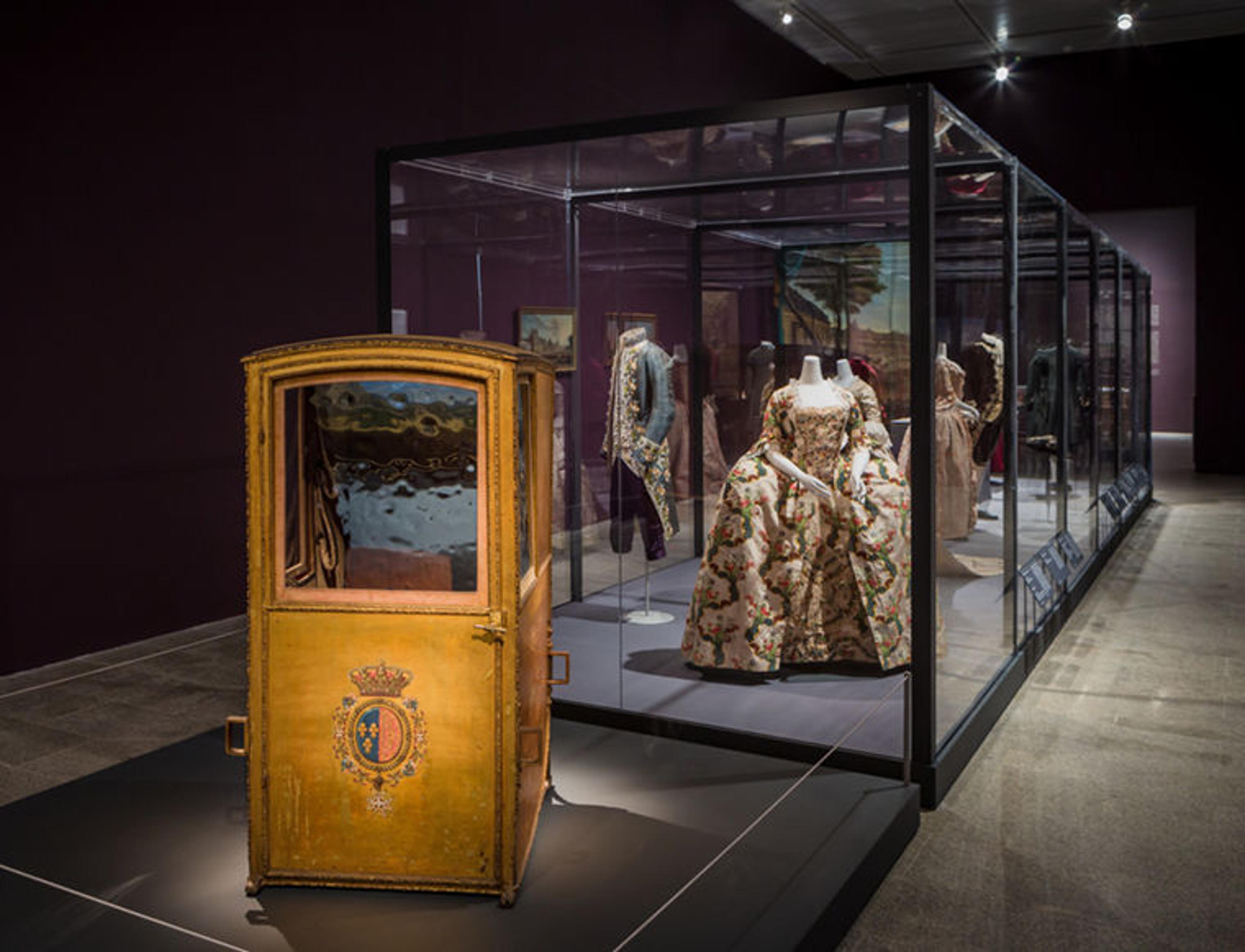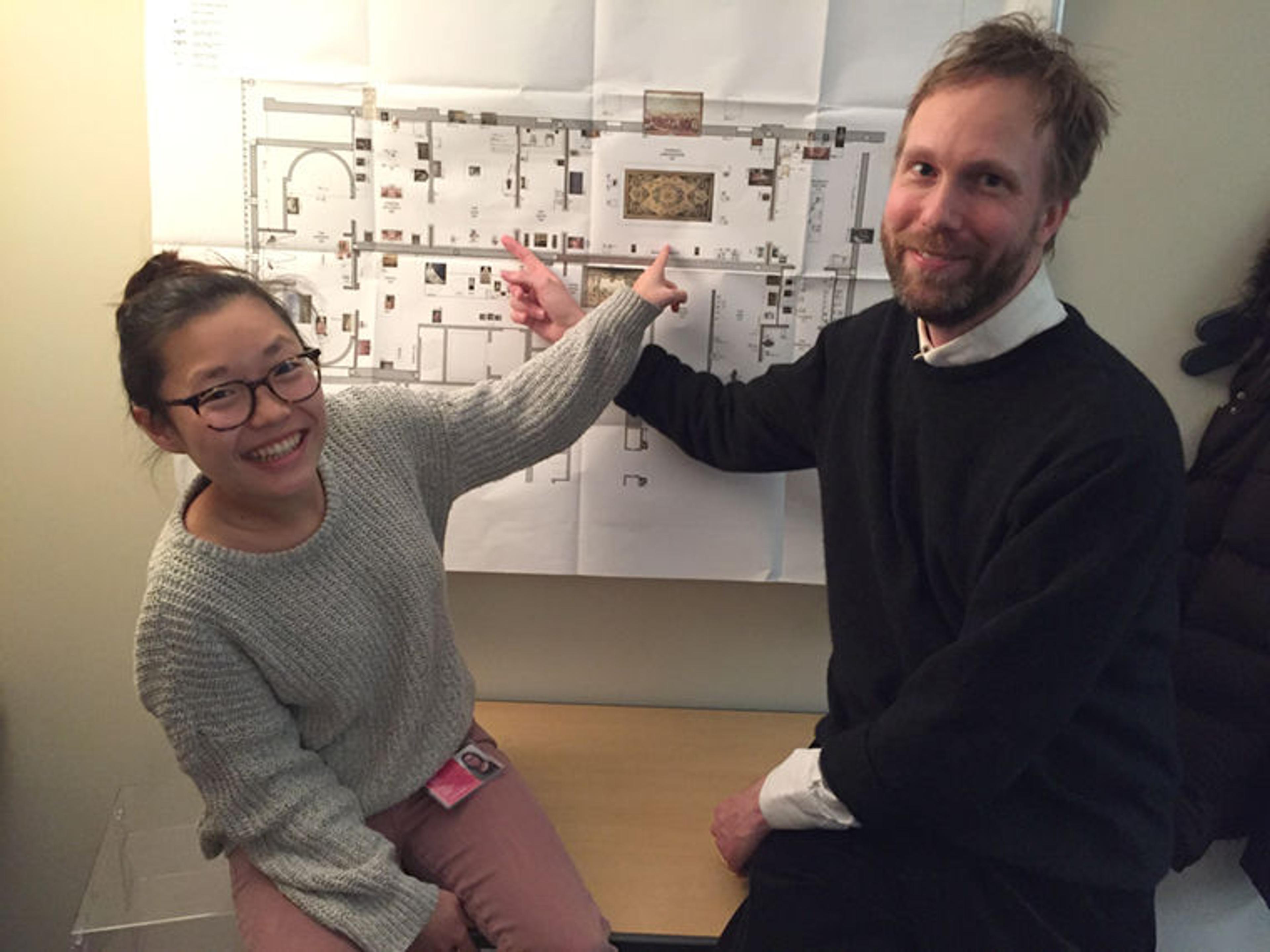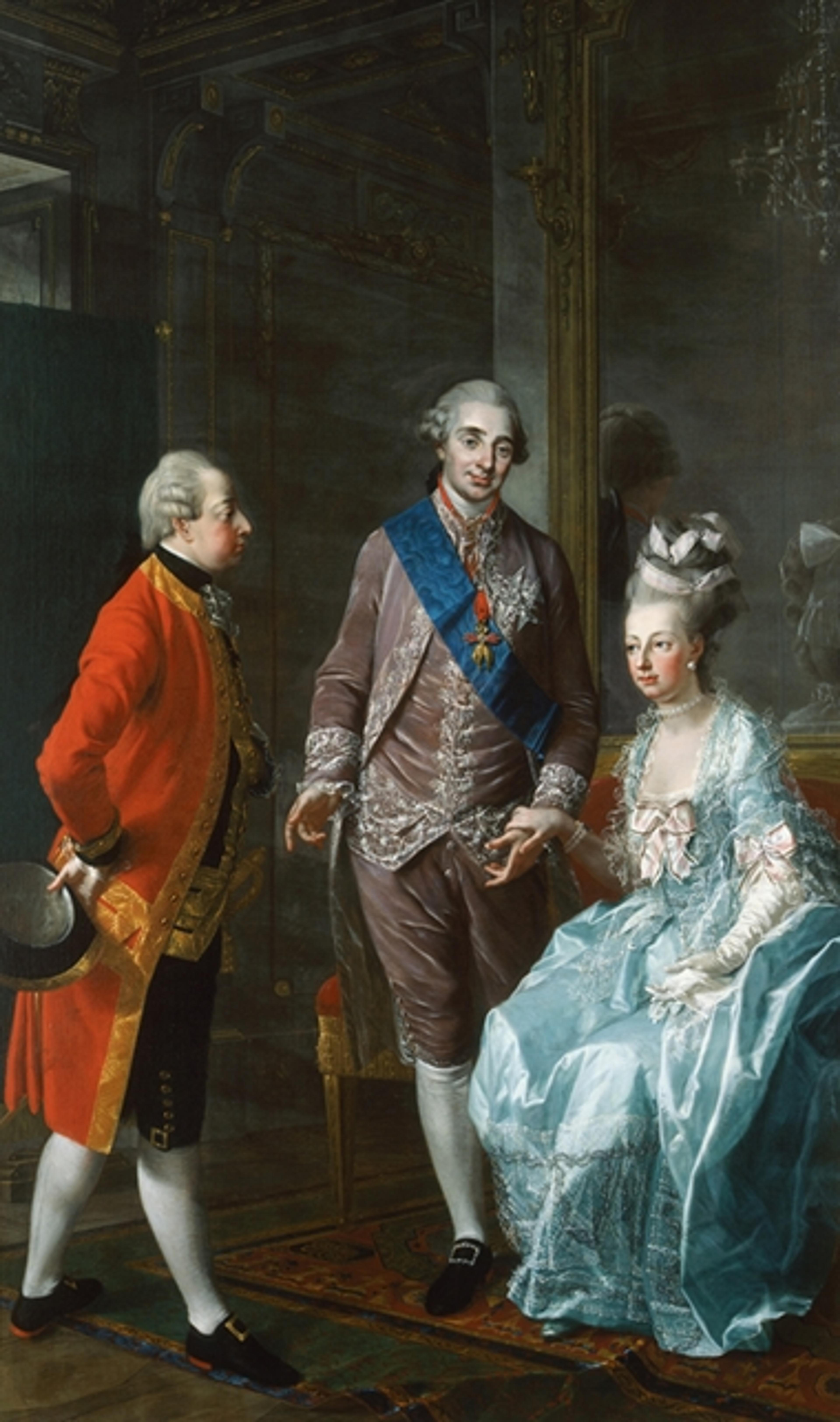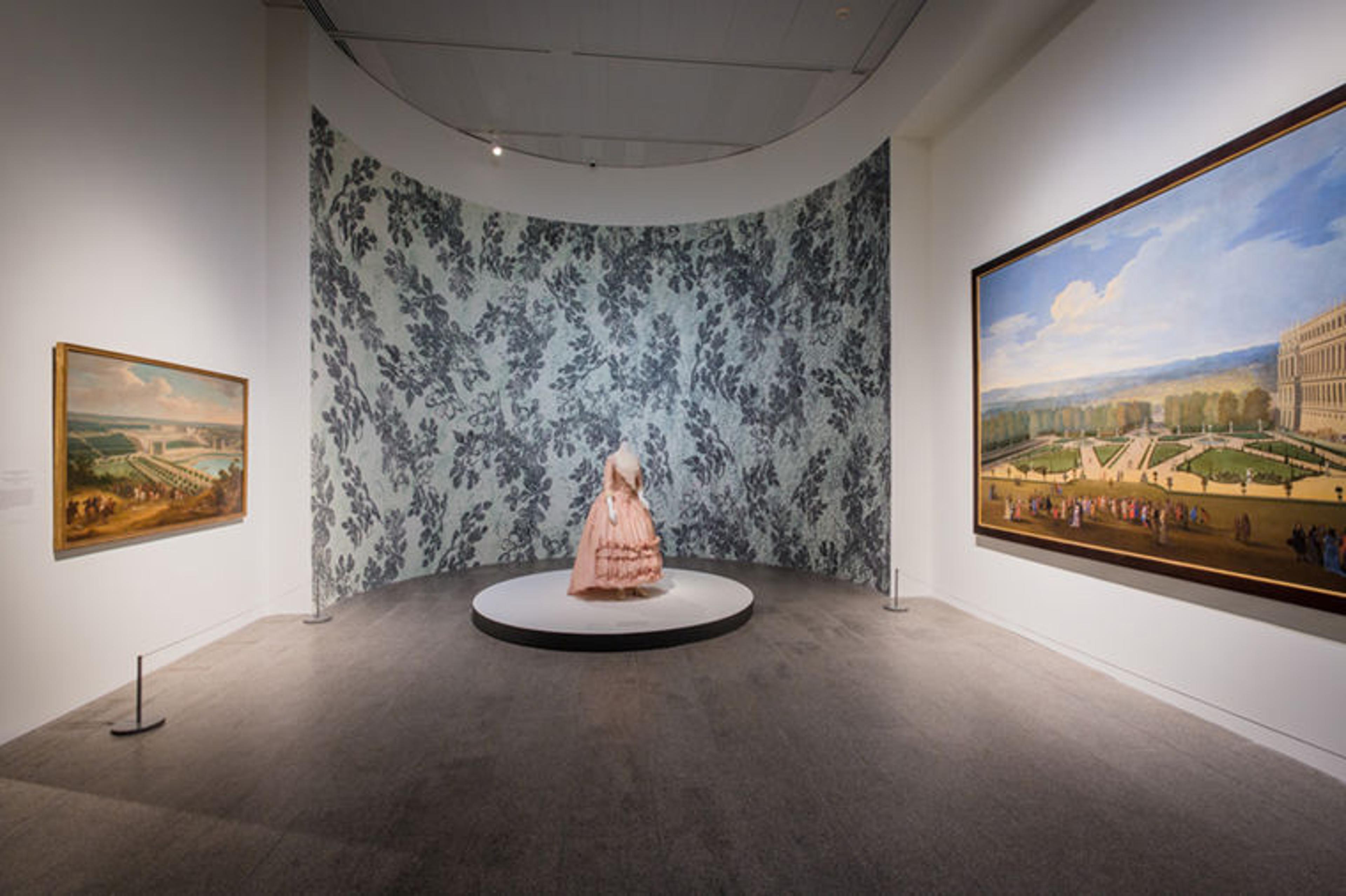Eavesdropping on History: The Ideas behind The Met's First 3-D Audio Experience

«How do you create a "you-are-there" audio experience, when the "there" in question is a palace in an entirely different century? A year and a half ago, I wasn't quite sure how to answer that question, either. Here's what I did know: The Met was in the planning stages for the exhibition Visitors to Versailles (1682–1789), and Daniëlle Kisluk-Grosheide, Henry R. Kravis Curator in the Department of European Sculpture and Decorative Arts, aimed to explore not just the palace and court of Versailles, but especially the experiences of its seventeenth- and eighteenth-century visitors.»
As a managing editor and producer on the content team in The Met's Digital Department, my objective was to support her interpretive goals with digital media. How might we bridge the centuries-old gap between those historic visitors and The Met's visitors today? How could we share their accounts so they'd feel meaningful, vivid, and, above all, alive?
The solution we came up with seems almost perfectly logical now: an audio experience that dramatizes their accounts within immersive 3-D soundscapes. The idea hatched, simply enough, when I went to meet Daniëlle in her office. I'd come to discuss the idea of an audio tour, or possibly shooting 360-degree videos of the palace interiors and gardens, but I was immediately distracted by what would become the backbone of the project. "Wow, what's all that?" I asked.
Along one long wall, a shelf groaned under the weight of matching binders.
"Those are all travelers' accounts," she sighed—as well she might after years of research on a complicated topic.
There were that many writings? From actual visitors? In their own voices? Tell me more!
She and Elizabeth Benjamin, her indefatigable research associate, described to me all manner of palace visitors: international ambassadors, European royalty (who often visited under assumed names and a lower rank to avoid too much pomp, circumstance, and expense), writers, poets, architects, bon vivants, gossips, and ordinary tourists. Their writings about their experiences catalogue the good, the bad, and the downright gossipy. For example, did you know even the likes of John Adams complained that the French had cornered the market on fashion? Another visitor was dismayed to discover the king had a shambling gait and poor posture. Did you see that the queen wears no makeup? The food is far too salted; it's much better in England. Can you believe the filth on the marble entrance staircase? And on and on.

Press play to eavesdrop on those traveling inside a crowded carriage from Paris to Versailles. For optimal binaural sound quality, please wear over-the-ear headphones while listening.
I could immediately see that a traditional audio tour, in which experts share commentary about specific objects, would not foreground this rich, contextual, and very human commentary. The project needed an entirely different approach in order to highlight this treasure trove of lively primary-source material.
In the months that followed, the idea to forego traditional commentary took further shape. As with all "simple" ideas, execution often proves more complicated. My team held innumerable conversations, pored over piles of reading kindly supplied by the curators, confirmed fiddly biographical details of historic figures, and crunched numbers for the budget. Throughout, the goal stayed simple: to bring alive the visitor experience, to make it fresh, and to make the emotions contagious—whether that be excitement, curiosity, awe, irritation, humiliation, or delight.
Without my team, I might have drowned in a sea of blurry photocopies from the fabled binders, strangled by the cords of innumerable headphones we tested for their sound quality. I am beyond grateful to Skyla Choi and Austin Fisher, the associate producers, for their creative ideas, diligence, and humor.

Associate Producers Skyla Choi and Austin Fisher point to their favorite gallery on the floor plan—our constant companion for many months. I can now draw it blindfolded. Photo by Nina Diamond
Good ideas require not just brainstorming, but judicious editing. With the clock ticking, the three of us debated which accounts were the most interesting, surprising, or funny. I adapted these into scripts to illuminate the distinct themes of ten different galleries, including: getting dressed for court, arriving at the palace, visiting the gardens, or seeing the king. The hope was that the script would allow these historic figures to chat among themselves in a conversational way. Some got along famously; others, not so much. For example, when you listen to the garden scene (scroll below), you'll hear that plenty of visitors wax lyrical about the beauty of the fountains, but I allowed another traveler to interrupt them. He proclaims the gardens to be "in bad taste," and the statues spouting water "vulgar."
Disagreements among the characters were one thing, but sometimes it got trickier than that. Certain galleries have themes that seemed beyond adaptation into a narrative. At those moments, the curators gamely answered our pleas:
"Was there an account from someone who actually saw Benjamin Franklin in court?"
"Was there someone who wrote about visiting the palace after the court was gone, but before the revolution?"
Why, yes, there was. And they'd surface yet another account from that library of binders. You can hear my favorite account by playing the audio link below, in which a German baroness describes the pièce de résistance of her fetching party attire: a tall wig, replete with small, water-filled glass bottles holding fresh flowers. Imagine wearing that while eating, drinking, dancing, and kicking back your train as you meet the king.
What was it like to attend one of Marie Antoninette's fabled parties at the Trianon? Hear accounts from those who were there. For optimal binaural sound quality, please wear over-the-ear headphones while listening.

Left: Josef Hauzinger (Austrian, 1728–1786). Marie Antoinette, Louis XVI, and the Archduke Maximilian, 1778. Oil on canvas, 98 1/16 x 59 1/16 in. (249 x 150 cm). Kunsthistorisches Museum, Vienna, Gemäldegalerie, now on display in the Widow's Apartment at Schloss Hof (8854)
While a typical audio stop might run ninety seconds, these soundscapes are two to four minutes in length. I thought this longer form would encourage The Met's visitors to move around while they listen. This experience of storytelling-in-motion evokes a physical journey through the palace's rhythms and rituals. This human pace through the palace's spaces is a timeless experience: even today, more than six million tourists visit Versailles per year to absorb its grandeur vista by vista, room by room.
As production continued, we considered the practical demands of featuring more than thirty characters in the script. For the most compelling delivery of the accounts, we'd have to find just the right professional actors to read the parts. Beyond performance, their ages and international accents would also have to match those of the historic travelers. (Please! Save us from Americans faking international accents!)
And what about sound effects and music? The palace's environments and architecture had a distinct character, too. If we wanted to "cast" them correctly, we'd have to produce tasteful renditions of authentic soundscapes, down to the crunchy gravel walkways of the garden, the rich thrum of conversation in a wood-paneled Council Chamber, and the crowds in the echoing Hall of Mirrors. But how, exactly?
We ruled out ambient sound and music piped into the galleries (too noisy and invasive—and it would drive security officers crazy). We also decided against using iBeacons, which use Bluetooth to trigger audio on smartphones, but disallow visitors from controlling the start and finish of an audio stop.
Throughout this process, everyone agreed on what we didn't want: a cheesy audio experience that sounded like something in a theme park with people dressed in period costume, pretending to churn butter. It needed to feel alive, not overdone. And again the question: how, exactly? We still hadn't decided on the best approach to fulfill the vision.

What was it like to visit the gardens and menagerie? As you'll hear, some visitors disagreed about the experience. For optimal binaural sound quality, please wear over-the-ear headphones while listening.
The key turned in the lock when I attended a museum conference and learned about an indoor-outdoor walking tour produced in London that mimicked the 3-D sound we experience naturally. I was intrigued. Binaural sound recordings could do that? I was all ears.
The way we experience sound in the natural world is different from how we often experience it via headphones. Picture our natural experience of 3-D sound this way: You're on a street corner in New York. On your right, you hear the crowd bustling past on the sidewalk. On your left, your friend whispers in your ear. Above you, there's a passing helicopter. Below you trundles the subway. It's "surround sound," but courtesy of the two microphones in your head—that is, your ears. They let you know what's where—how many inches, feet, or miles from you, and in what direction. When you close your eyes, you can nonetheless call up a precise image of your physical environment. Binaural audio recording mimics the dimensionality and immediacy of this experience.
That's it—that's what I wanted for this project. Why record actors in garden-variety stereo if we could evoke the visceral feeling of eavesdropping, of being visitors among them? This would allow the historic visitors to be our guides, accompanying us in a kind of time travel.

Right: We used this binaural recording head, which has a microphone in each "ear," to capture sound in a way that mimics how we hear naturally. Photo by Nina Diamond
We researched a variety of companies with relevant experience, and were fortunate to find a very talented team in the United Kingdom. They shared our sense of taste, plus our appetite for a tall creative challenge. After lengthy conversations about our vision, desired tone, budget, and logistics, Chris Timpson, co-founder of Aurelia Soundworks, used excerpts of the draft script to craft a brief but impressive prototype.
A picture's worth a thousand words, but a binaural prototype is pretty effective, too. After we shared it with Daniëlle, she came to appreciate our proposed audio experience as "integral" to her vision of the exhibition. Without it, she said, no one would ever hear the voices and experiences of the historic travelers in quite the same way.
Integral. That one little word suggested the experience should be available to all visitors to The Met's exhibition, not just the few who typically pay to rent the Audio Guide devices. Again, a fine idea, but the implications were significant.
Looking at the projected estimates for attendance, we realized we'd need a veritable mountain of devices and headsets. Would distributing them even be possible given the traffic flow? Could the Design Department accommodate this by adjusting the architecture of the entry to the exhibition? And what would it all cost?
I'll spare the nitty-gritty (including a line item in the budget for the disinfectant wipes to clean each headset after use). The important thing is that we persevered, and the idea is now reality. (For more on the actual production process, stay tuned for a future blog post.) I am grateful to colleagues all across the Museum who got behind this idea. From Daniëlle and Elizabeth, for their expertise and trust; to Senior Manager of Digital Content, Lauren Nemroff, for her unfailing support; Deputy Director for Exhibitions, Quincy Houghton; to the Design and Development Departments for their creative solutions; and to the Members and Visitors Services Department and Security for their practical accommodations.
Thanks to teamwork of, ahem, palatial proportions, the free immersive binaural audio experience is now available for you to enjoy in-gallery and online.
For optimal binaural sound quality, please wear over-the-ear headphones while listening.
In case you haven't heard it yet, please listen and tell us what you think. Don't forget to use over-the-ear headphones, as computer speakers or ear buds won't deliver the optimal binaural sound experience.
Curious to learn about the binaural audio production process? Meet the sound experts and the actors who worked magic, and peek behind the scenes during our recording in an historic mansion in rural Devon, England—despite the storm dubbed "The Beast from the East" raging outside.
Related Content
Visitors to Versailles (1682–1789) is on view at The Met Fifth Avenue April 16 through July 29, 2018.
Learn more about the binaural audio experience and view the exhibition galleries.
Read more about the curating of Visitors to Versailles in a blog post by exhibition curator Daniëlle Kisluk-Grosheide.
The exhibition catalogue is available for purchase at The Met Store.
Nina Diamond
Nina Diamond is an executive producer and editorial manager in the Digital Department.